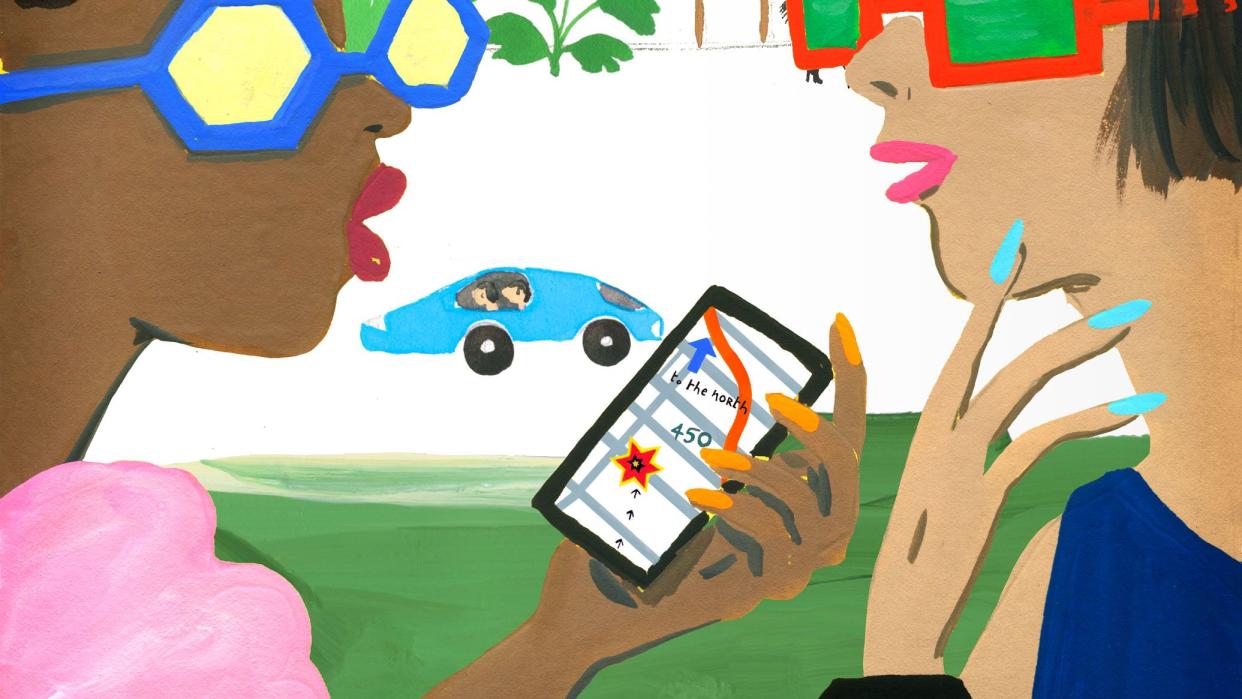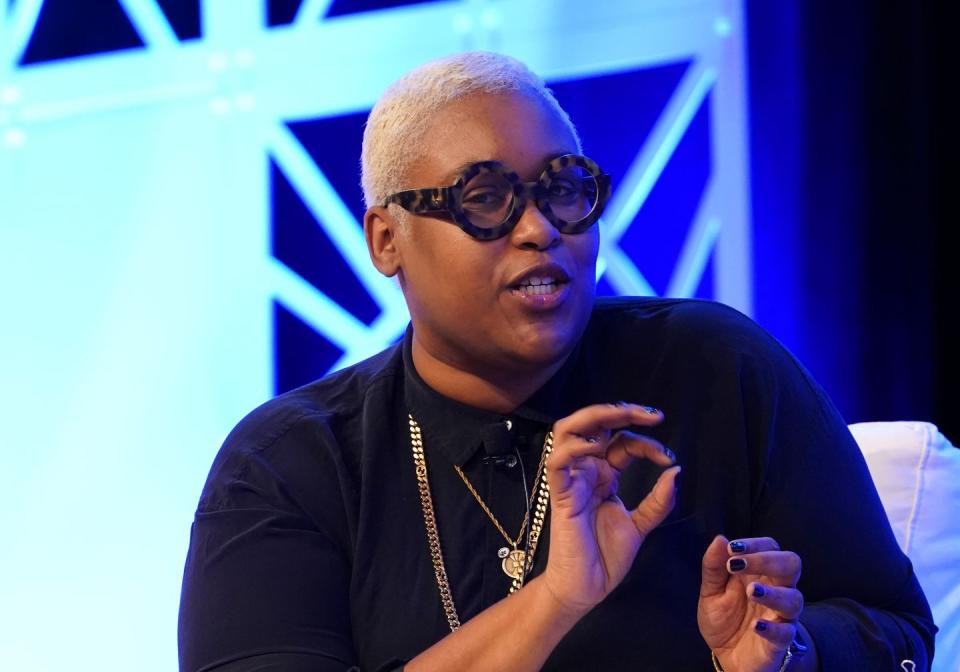The Snob's Guide to Travel Google Docs

A year ago, while sitting in a café in Milan, I asked a recent American transplant to the city for spots off the beaten path that I wouldn’t have patronized during my fashion week tours of duty. What she did next surprised me. Pulling out her iPhone, she chirped, “I’ll share my Google Map with you!”
Now, I had been a casual user of “My Maps,” the feature Google rolled out in 2007 for the sole purpose of making navigation easier, and I had even exchanged such atlases with friends, but this one was curated by someone with exceptionally good taste who was plugged into a matrix of travelers with supremely covetable tips. As it turned out, I got a digital pushpin chart not just to Milano but to every single place I could ever want or need to visit—in the entire world. Hotels on small islands I’d never heard of. Vintage shops on secret side streets. Restaurants better than the usual foodie favorites. The kind of if-you-know-you-know places shared only with confidants, lest they be spoiled.

With one act of generosity, I was suddenly inside a whisper network that made Tripadvisor look basic and my own itineraries seem like amateur hour. Its members are not exclusively famous or wealthy; they’re a roving aristocracy of travel foragers, such as the digital strategist JiaJia Fei, who has been hitting the international art fair circuit for the last decade and has the Google Maps and Docs to show for it. While working at the Guggenheim Museum, she even helped create a publicly accessible map of installations around the world by James Turrell, who envisioned a sort of passport system where you’d get a stamp at each of his sites.
“I still refer back to this list when I travel to see if I can check one more off my list,” Fei says.
Virtual treasure maps may be tech’s latest innovation for streamlining movement, but they’re not entirely new. Long before Google’s office suite (around 300 BC, actually), advice on visiting foreign cities was handed out by friends, agents, experts, and, every so often, an indiscreet concierge full of local insights. Before the internet, intrepid globetrotters consulted their paperback Lonely Planets and Zagats, the latter of which began as a survey among friends in New York for insidery knowledge.
Back when Beverly Nguyen worked for celebrity stylist Kate Young, design houses sent around high-level cheat sheets for fashion week visitors. “Valentino would send out a guide that said, ‘Here are the best things to do. Make reservations here. Go to this museum,’ ” says Nguyen, who is now a sought-after stylist herself and the owner of a homewares shop. Social media turned everyone into an expert, and soon savvy young travelers were curating their own versions on Google Maps.
On it, users can flag places they want to go, star them, mark them as their favorites, or add them to a separate list called Travel Plans. They can then color-code each spot according to which category it falls into, leave notes for themselves, combine recommendations with those from others, and email the whole thing to friends, who can then email it to their friends. (Not so fast, though: Privacy settings can be turned on to prevent easy dissemination.) For many, collecting travel recommendations has become something like a game—gotta catch ’em all!—and the especially type-A will even create extensive Google guides to their own cities to keep up with the latest openings.
To capitalize on Instagram-induced wanderlust, in recent years other apps have emerged, like Step and AmiGo, that pay influencers and those with large social media followings, like the photographer Sam Youkilis. (AmiGo is invitation-only, like the dating app Raya.) Notion, a productivity and note-taking app, also recently introduced a function that allows users to write an itinerary using AI.

But apps are for beginners. Among nomadic connoisseurs, the most prized guides do not bear the signatures of celebrities or even reflect the sensibilities of boldfaced bohemians. These hot docs are passed around like contraband, because they’ve been around for years, edited, revised, and updated like epic poems that are never finished. Fei’s public maps for Miami, London, and Mexico City have thousands of views. Nguyen, who is proud of her guides to Paris, Naples, and Hong Kong, says celebrity stylist Thomas Christos Kikis, who counts Gabrielle Union and Sofia Vergara as clients, has a New Orleans tip sheet that’s hard to beat. And food writer Katie Parla’s Rome guide directs diners to non-pasta spots, say, Filipino or Bangladeshi meals.
“I rarely recommend that people go to the obvious things,” says Nguyen, who uses Google Sheets. “I’ll never say, ‘Go to the Ritz.’ ” Instead she’ll give you names of all the best Vietnamese restaurants in Paris, the phone number of a Loewe shopkeeper in Madrid who will take you out clubbing, and the coordinates of a no-name dive bar in Puglia. Twenty-two years ago Nils Bernstein, a food, wine, and travel journalist, received a Microsoft Word document of Mexico City recommendations from a local friend of his, and he slowly added to it himself. The list is now a 30-page Leviathan in 10-point type and perhaps the OG source of all the Mexico City guides out there. Bernstein is devoted to Word, but at some point someone uploaded the guide to Google Docs to make it more easily shared, and it has since been copy-and-pasted, whittled down, added to, and emailed ad infinitum.
“One time I was there with a group of friends who were visiting,” Bernstein says, “and one of them said, ‘Well, you know, that’s all good and fine, but I have a really, really, really good, trustworthy list.’ It was a close friend, but somehow he got it in such a roundabout way that he didn’t know it was from me.” He doesn’t worry about it ever getting in the wrong hands, or that he may have created a monster. “Most of my anxiety around it revolves around people having really old versions of it,” he says, adding that he tries to add updates regularly, but it can be hard to keep up. “Like, ‘Wow, this guy’s really lame. He doesn’t have all these hot new places.’”
Others are more protective of their recommendations, something I learned the hard way. That expat with the invaluable Milan map? The share settings changed the minute I touched down in New York.

Leta Sobierajski, an artist who works with the likes of Gucci and Comme des Garçons and travels frequently, particularly to Japan, will share her carefully curated itineraries only with IRL close friends (as opposed to her 100,000 Instagram followers). “I used to have a map. I think I shared it with, like, two friends, and five or six years later I’m still getting weird requests from random people to access it,” Sobierajski says. “They don’t even email me. It’s just, ‘So-and-so-at-gmail.com is asking for permission,’ and that really bothered me. That disassociation—people don’t even really care what the curator’s interest is.”
To preserve the integrity of the practice, Aminatou Sow, an interviewer and New York Times best-selling author who was born in Guinea and grew up in Nigeria and Belgium, believes that recommendations should be earned. “I give up my very good ones only to people who I know will appreciate them and who have also given me very good recommendations,” she says. “It’s like all things in life: You can’t be a guest all the time; you also have to be a host.”
Today she keeps her thoughtful curation close to her chest, leaving personal notes for herself and intimates. “I make Google Maps for friends the way you would a mixtape, and I get a lot of pleasure out of that,” she says. “But what’s really magical is being bestowed a Google Map, and not having to ask for it.” That’s when you know you’ve really made it.
This story appears in the Summer 2023 issue of Town & Country. SUBSCRIBE NOW
You Might Also Like

